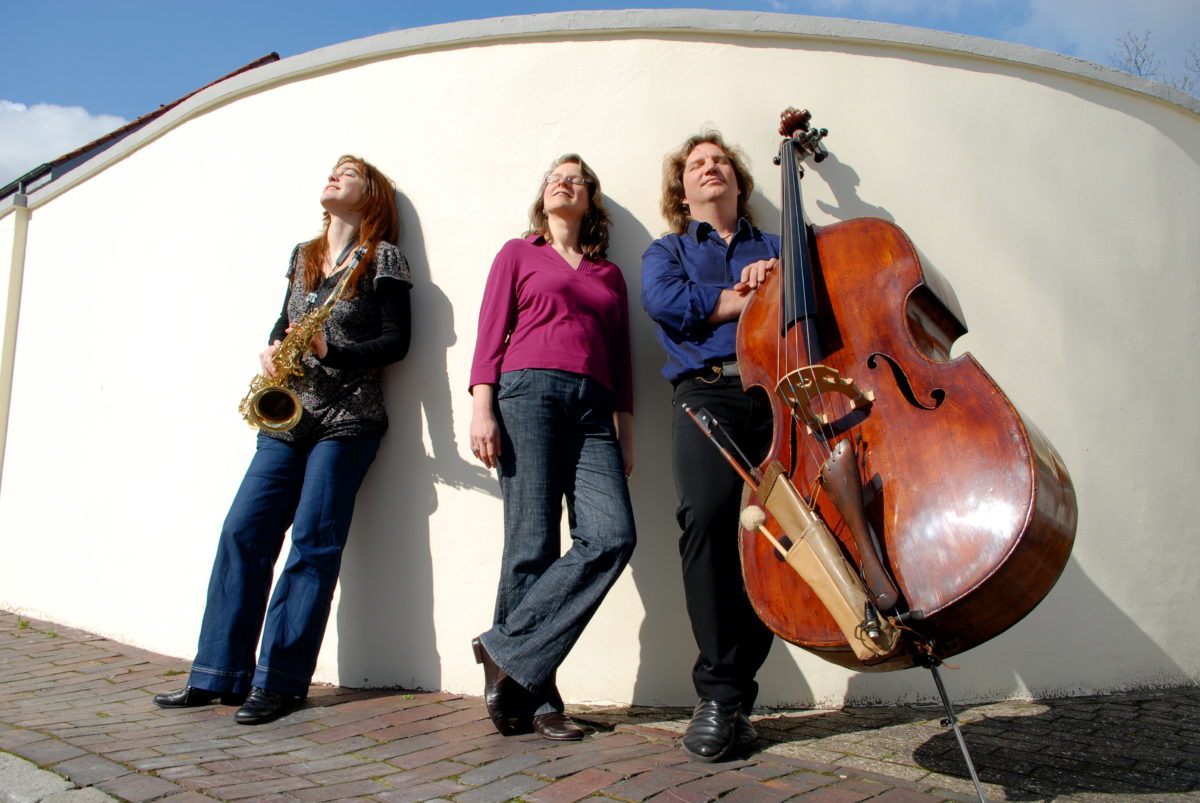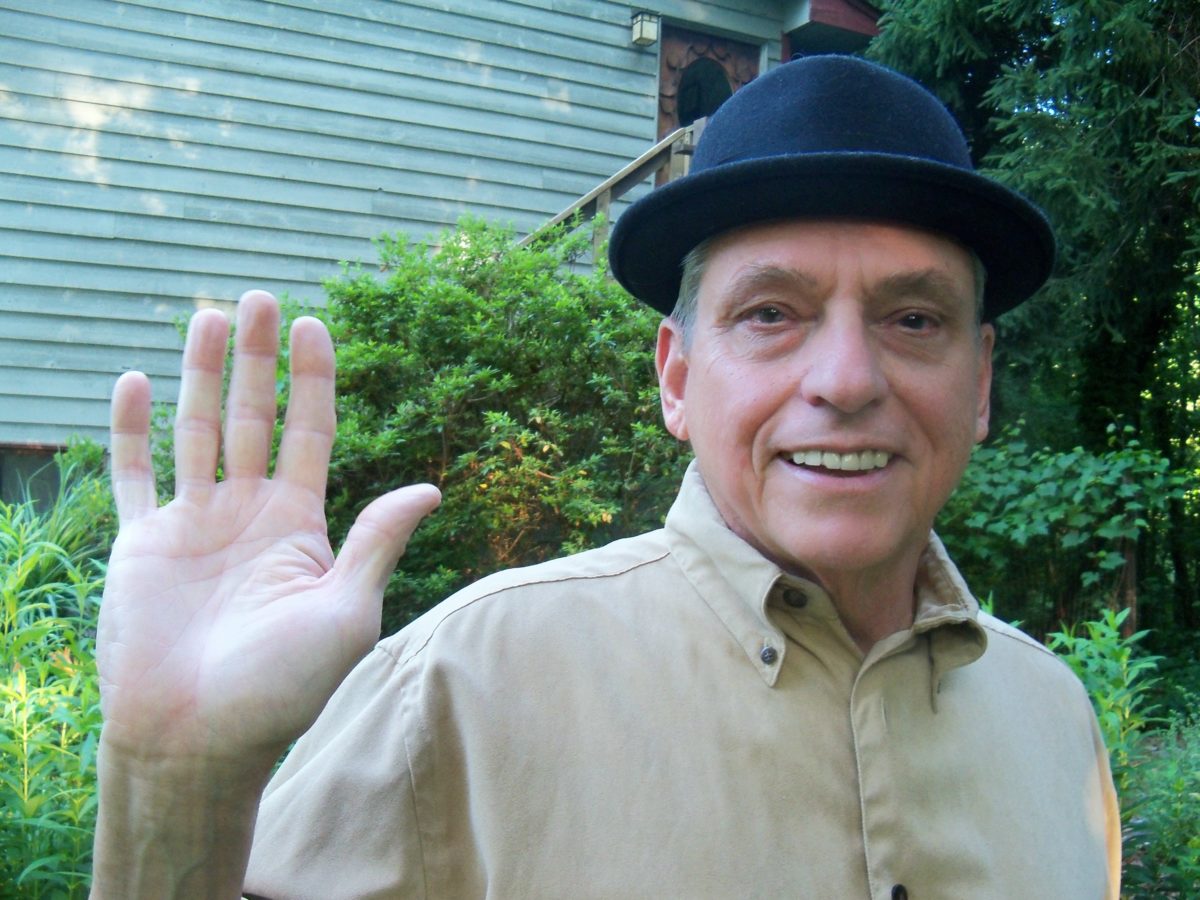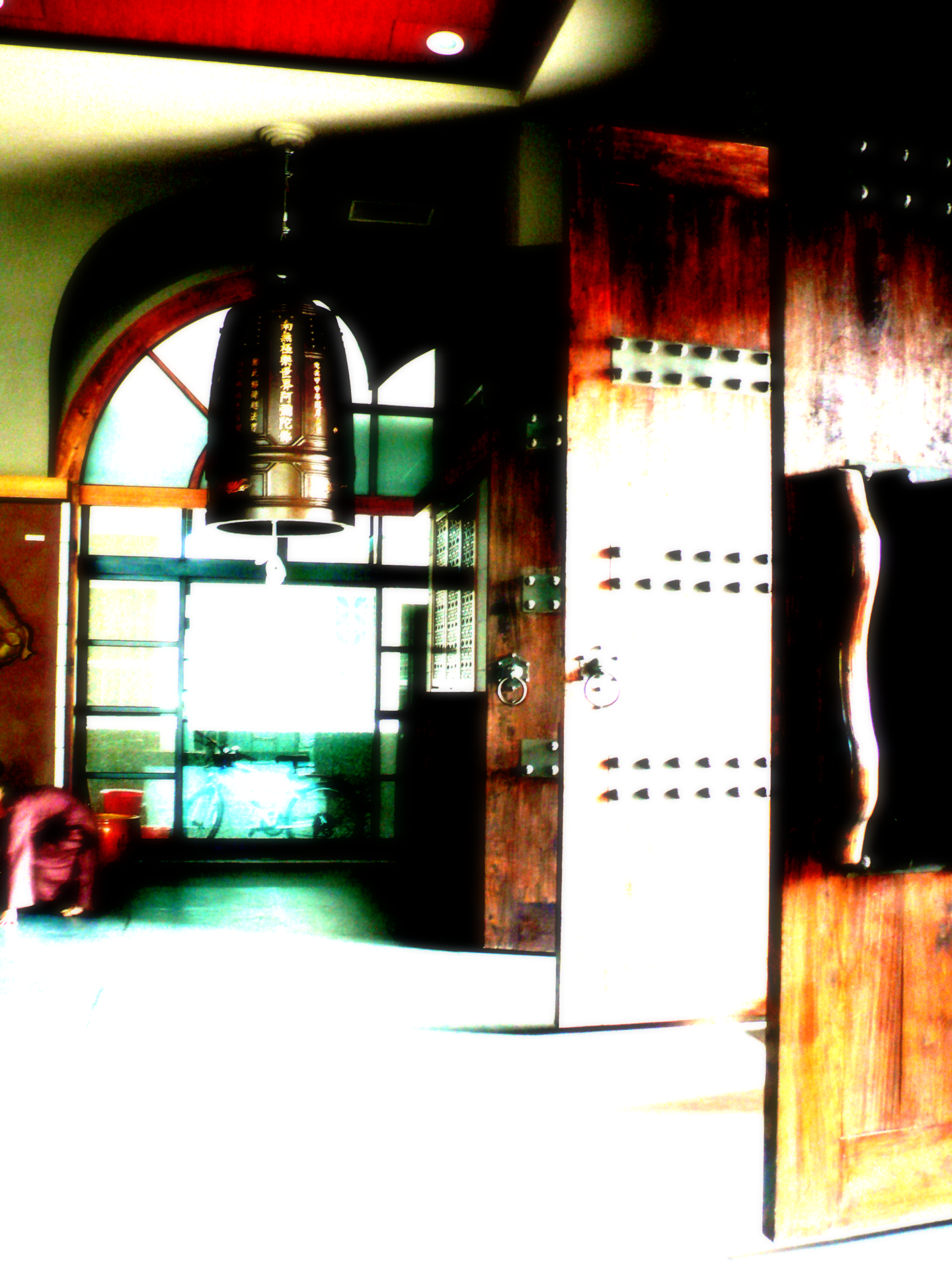Sangha, Loss, and the Creative Process: An Interview with Susanne Olbrich
By Philip Toy

Into the nebulous, ongoing mystery of life I welcome, as if through an open door, the continuing spirit of the one I have loved.
– Martha Whitmore Hickman
During our summer 2010 pilgrimage to Ireland and Scotland,
Sangha, Loss, and the Creative Process: An Interview with Susanne Olbrich
By Philip Toy

Into the nebulous, ongoing mystery of life I welcome, as if through an open door, the continuing spirit of the one I have loved.
– Martha Whitmore Hickman
During our summer 2010 pilgrimage to Ireland and Scotland, while visiting the Findhorn Community, we were invited by Northern Lights Sangha to conduct two Days of Mindfulness. One of the Sangha leaders, Susanne Olbrich, True Ever-present Stability—pianist, composer, and teacher—graciously consented to this interview.
Philip Toy: Susanne, you have just returned from a concert tour in Germany, where your Marama Jazz Trio was warmly received. You composed some of the music after the sudden loss of your dear friend and former partner. One piece, “Beyond Gone,” was a meditation you played soon after hearing the news of H.’s passing. How do your practice and your music relate to such a loss?
Susanne Olbrich: It was in Plum Village during the ‘05-‘06 Winter Retreat, just after H.’s suicide, where I took refuge in the Three Jewels. Thay’s teaching on continuation supported me then, especially in light of his conviction that those who take their own lives may not have a good chance of continuing beautifully. Then and there I made a deep commitment to help my friend continue beautifully. Thus the piece “Beyond Gone”—a phrase from Stephen Levine’s book, Who Dies?
PT: Keeping such a commitment in the wake of deep loss requires extraordinary support. Where and how did you find support and encouragement?
SO: It started the first few moments after hearing the news when the shock set in and my legs began to go numb. It seemed as if what kicked in and began to operate was an emergency program designed to hold me. I heard the instruction, “Breathe, just breathe!” This inner voice lingered, and later became like a reliable old friend suggesting when I should rest, when I could let go of an excess obligation, when to focus on one breath, one step, and when to ask for help. Very unlike me! Yet, I would sit on my cushion much longer than usual, however long it took for the pain to subside.
PT: I can see how your decade of practice before this loss paid off. Yet, even with this fortunate help, how did you sustain yourself?
SO: I could not do it without my loving and steady Sangha. They gathered at my place, cooked soup, and filled the house with warm food aromas and their even warmer understanding presences. Whether I had the energy to fully participate or not, soon my isolation began to melt in the warmth of their companionship and compassion—their Sangha eyes, hearts, and hands.
PT: I know from my own experience of the death of my son, Jesse, by drug overdose, and my very close association with Sangha—the complexity of the loss of a child, likely by suicide, calls out for a rich and special brand of caring. How does Sangha embrace and minister to these complexities?

SO: Making space and holding it, deep listening, sharing from the heart—all central components of effective Dharma discussion— together with the gift of benevolently witnessing one another in the circle. These all allow for the kind of conscious grieving and reflecting that can help dissolve searing issues and questions, such as not having time for bidding goodbye to the lost loved one, or the anger and guilt of “What did I do, or not do,” or “What could I have done,” or “If only….” We can allow all this to unfold within the stable and protective space of the Sangha without fear of getting lost or overcome.
PT: You and I share the experience of surrendering and taking refuge in Sangha following a tragic loss. For me it was key to surviving those earliest days, weeks, and months after my son’s death. As Thay teaches, the Buddha is there, too, in the midst of Sangha. Were you able to take refuge in the Buddha?
SO: The Buddha I took refuge in was the Buddha I had discovered in myself through practice, especially practice with my Sangha. It was the energy capable of witnessing tears and distress with utmost tenderness and letting me know it was okay. There arises an open space for us to recognize harsh feelings and thoughts. Within the fold of Sangha, these feelings may be held gently in the light of awareness, and we may finally watch them evaporate! This was the single most powerful act of self-care I could have given to myself—not just once or twice, but again and again with patience and perseverance. This is the love that heals.
PT: You say you made a commitment to help your lost partner continue beautifully. Tell us more about that commitment.
SO: Thay says that Dharma, too, can be found in Sangha. In Plum Village Sangha those five years ago, I read Thay’s book, No Death, No Fear. Through the teachings on no-birth, no-death, transformation, and continuation, my sense of deep loss was mitigated some and it sparked a new awareness. I was able to see the ways in which my lost friend continues: his adult children, the song I wrote for him, the tree planted at his memorial, the sturdy wooden tables he built for our Findhorn Community Centre, the grove in the Scottish Highlands planted in his honor as part of a national reforestation project, and of course, the many memories I and others hold dear. Also at that winter retreat, I birthed the idea for a new album, a CD in H.’s honor. The cover art would be one of H.’s beautiful nature photographs and the album’s name would be Continuations, in order to celebrate that: “Nothing exists on its own…. Everything is a continuation of something else, and everything will continue in manifold forms…. Nothing is ever lost.” Manifestation of the CD took nearly four years. Every step of the project was a teaching for me, from cover design to legal questions about royalties, from finding a manufacturer to creating a record label, and it was a labor of love. When I finally held the finished product in my hands, with H.’s photo of the Scottish West Coast, it was beautiful. I knew part of my grief had transformed into something else; an artistic offering, a rose from the compost.
PT: You seem to have a heightened awareness of transformation and continuation, leading to the birthing of your Continuations CD; there’s an interaction between mindfulness and the creative process.
SO: Yes. The energy generated in mindfulness and the practice of deep listening, together with a present-moment focus—allowing what is to be—are working elements for me during the composition or playing of a musical piece. Composing music in its essence has much to do with listening deeply. What takes shape in my inner ear—from apparently mysterious sources—often amazes me. I simply could not have thought it out. In the case of “Beyond Gone,” that’s exactly what happened. About six weeks or so after H.’s suicide when many of my friends had gone back to normal, I was still feeling anything but normal. There was this not-so-subtle pressure that I should be over and done with this grief—ready to move on. In this emotionally stuck place, I had a strong impulse to play for H. It was a meditation.
PT: Your band members’ masterful back-up and solos on Continuations could be seen as an extended Sangha support for you in your grief journey.
SO: Yes, I am extremely fortunate to have found Anja Herold (soprano and tenor saxophone) and Jens Piezunka (acoustic bass and cello). Both bring an extraordinary quality of listening, musical sensibility, and creative imagination to the project. Both of these seasoned improvisers have significantly broadened my musical horizons. Musically, creatively, as well as personally, my work with Marama Trio has been harmonious and joyful.
PT: It seems that as your grief unfolded, your creative process ran parallel to your practice, or in concert with it. I’ve discovered that grief is different for everyone, that it’s at best a bumpy road, and that there is no fast forward button.
SO: Exactly my experience. During the final stage of the creative journey that led to the Continuations CD, I was blessed with two extra-large helpings of Plum Village energy. I was able to spend a whole month with Thay and the Sangha for Summer Opening, 2008, and again for Path of the Buddha Retreat, 2009. Feelings of inadequacy, ignorance of the technicalities of CD production, plans gone awry, bouncing between Scotland where I live and Germany where my band members live—all of these left little time for rehearsals and other preparations. So the energy of the practice was strong in me when I needed it most.
At Findhorn we have woven into the fabric of the community workday the practice of “attunement,” a kind of practical, organizational deep listening. Shifts in every department—management, kitchen, garden—begin with a joint attunement, sometimes holding hands, sometimes sitting around a candle, always breathing together for a moment in silence with a wish to benefit others, uniting heart and mind for the task at hand. While producing Continuations, for the first time in my life I adopted regular attunement sessions for my own often solitary musical work and have continued the practice ever since. We’ve discovered that our attuned work frequently yields a better result than work driven simply by efficiency-oriented thinking mind.
PT: You are very fortunate to have the dual communities of Northern Lights Sangha and the Findhorn Community to engage with, especially in times of great loss and creative struggle.
SO: Yes, I feel gratitude for these two amazing groups every day. I’ve been living in the spiritual community of Findhorn for over ten years now, and our inherent humanistic and ecological missions inform all that I do, here in my Sangha and everywhere I travel. While in the distant past my life has felt at times like pushing the proverbial boulder up the mountain, guided by Buddha mind within these two communities, the CD manifestation unfolded remarkably gracefully. I wish I could claim success practicing equanimity in every corner of my life. In fact, work and relationships are two areas where I do get caught in habit energies more often than I like. Yet, mindfulness practice over the years—be it through dark paths of grieving or inspiring musical projects—has informed and enriched my life. Music, like mindfulness, has the capacity to bring us home to ourselves and in touch with the wordless, refreshing, and healing aspects everywhere surrounding us. With it we can water seeds of beauty, understanding, and love. The piano has been my passion since age six and, long before I knew the term “meditation,” it became a refuge, a place to learn about concentration and dwelling happily in the present moment.
PT: I noted that some of the most common audience responses to your music during the Germany concerts were meditative: “soulful,” “spacious,” “it slowed me down in a pleasant sort of way.”
SO: Yes, though the project may not explicitly be about Dharma, it makes me so very happy to have touched listeners in this way.
PT: Thank you very much, Susanne. May you and your work in this world ever remain soulful and spacious.
Author’s note: On our return from Isle of Skye to Findhorn for our second Day of Mindfulness, I received news that my sole surviving elder brother had died. As I reflect on our stay at Findhorn, although we were across the ocean and far from home, we could not have been in a more accepting, loving, and understanding environment. From my sundown bedroom window at the Shambala Retreat House, I watched the tide wash out over Findhorn Bay, and I knew, despite everything—maybe because of everything—all shall be well, all shall be well, all manner of things shall be well.
For more information about Susanne Olbrich and her music, visit www.myspace.com/susanneolbrich.

Philip Toy, True Mountain of Insight, and his wife Judith have founded three Sanghas in Thay’s tradition. Since 1993, they have hosted mindfulness practice centers—first at Old Path Zendo in Pennsylvania, and for the last twelve years at Cloud Cottage Sangha, Black Mountain, North Carolina. Philip is a poet and jazz pianist. Cloud Cottage Editions is the Toys’ Dharma publishing imprint.

